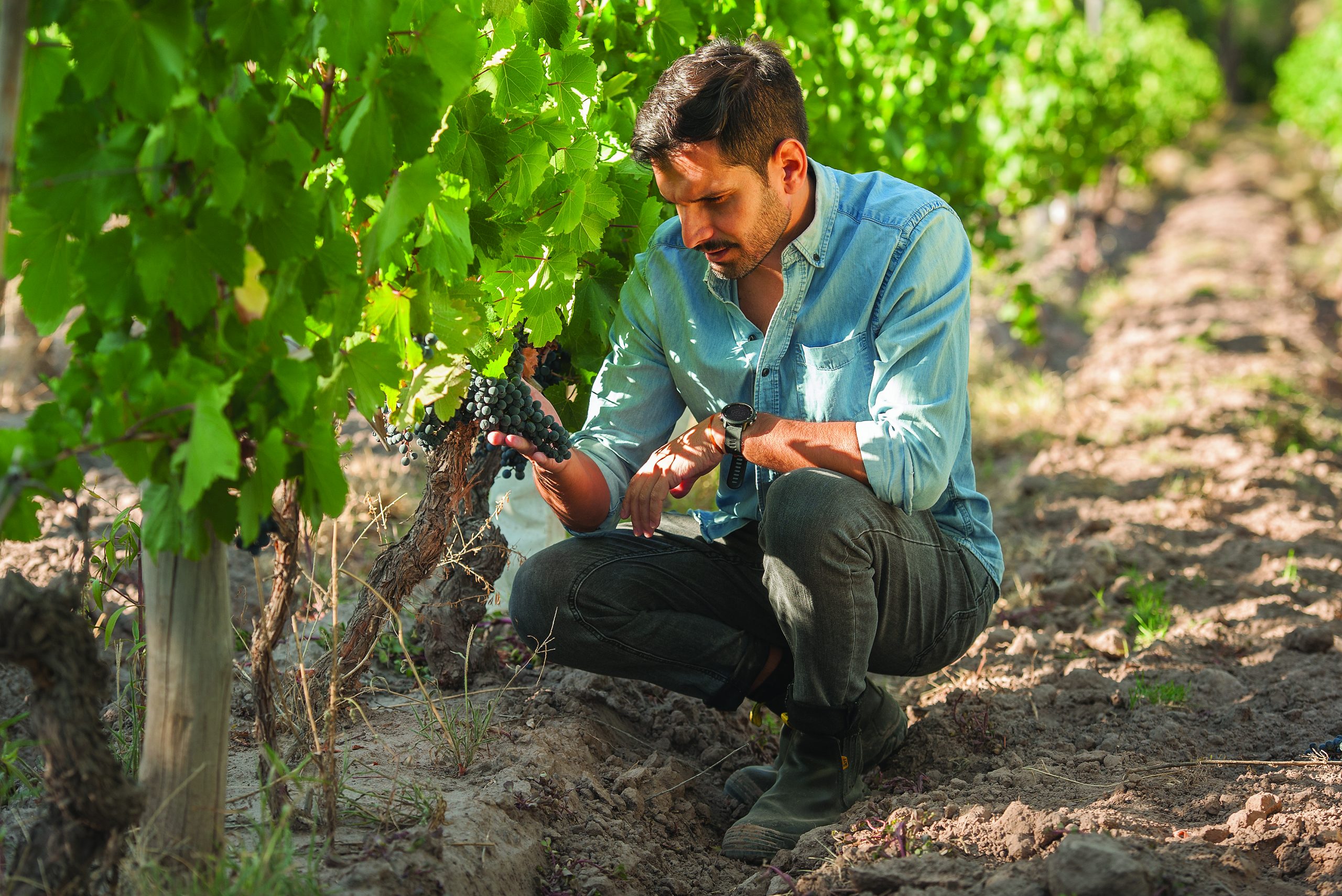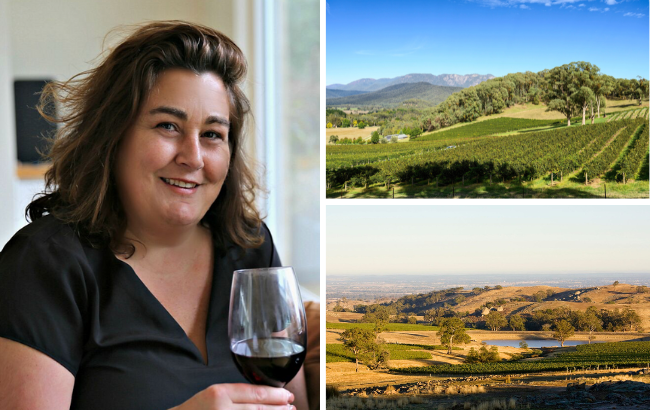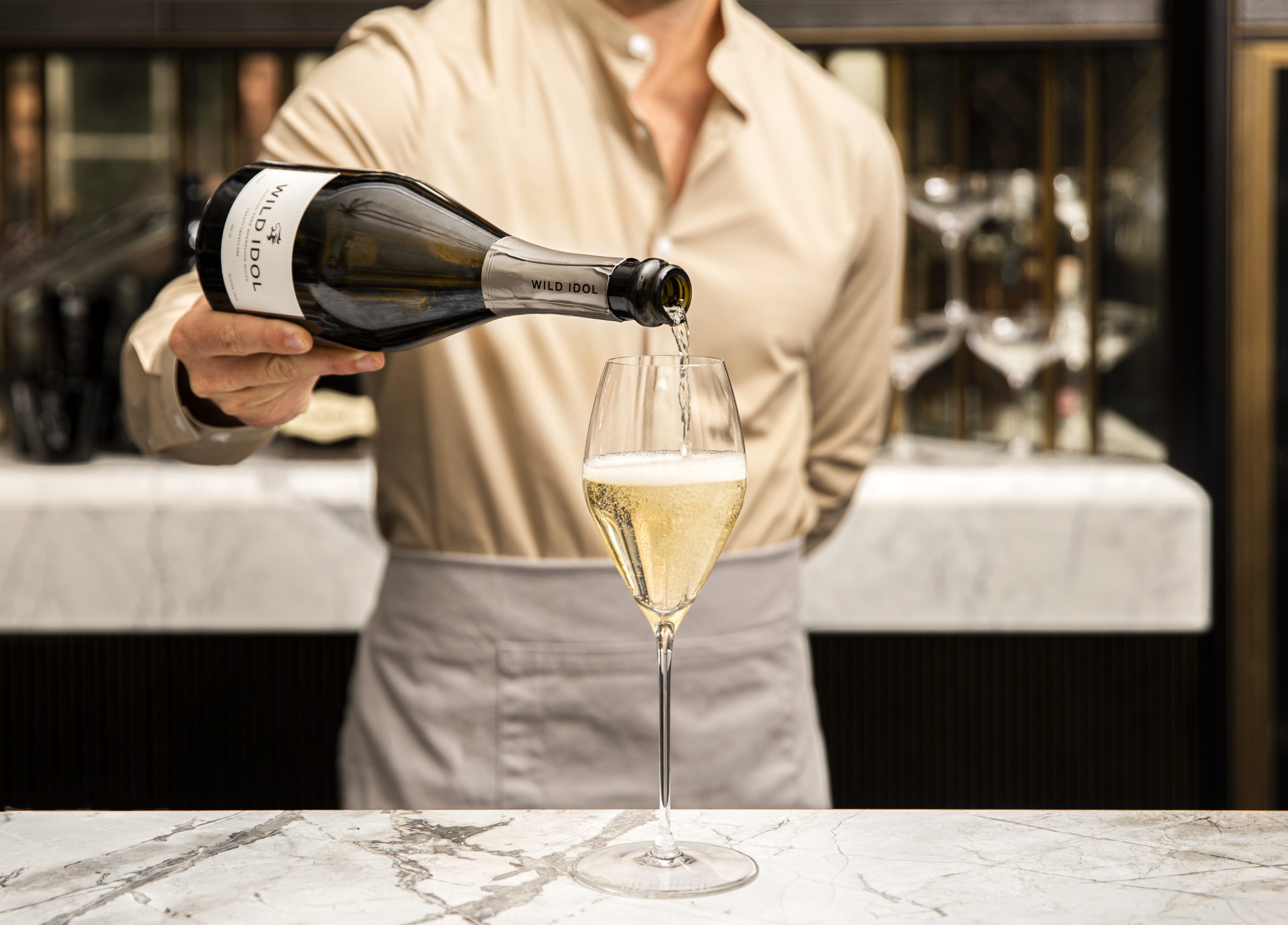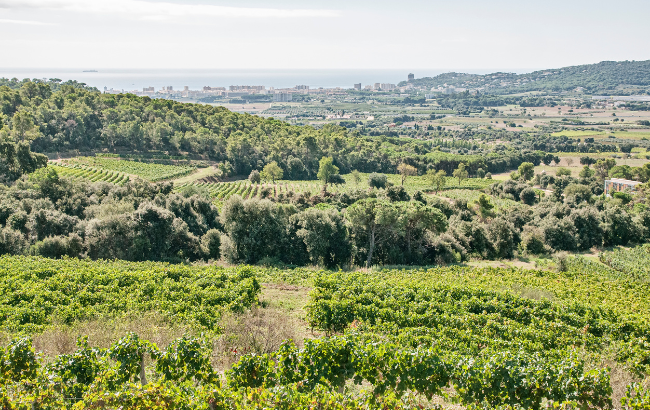This website uses cookies so that we can provide you with the best user experience possible. Cookie information is stored in your browser and performs functions such as recognising you when you return to our website and helping our team to understand which sections of the website you find most interesting and useful.
Pelaverga Piccolo: an outsider in the kingdom of Nebbiolo
By Filippo BartolottaFilippo Bartolotta digs into the geological and human history of the Barolo commune of Verduno, home to the often overlooked grape variety Pelaverga Piccolo.
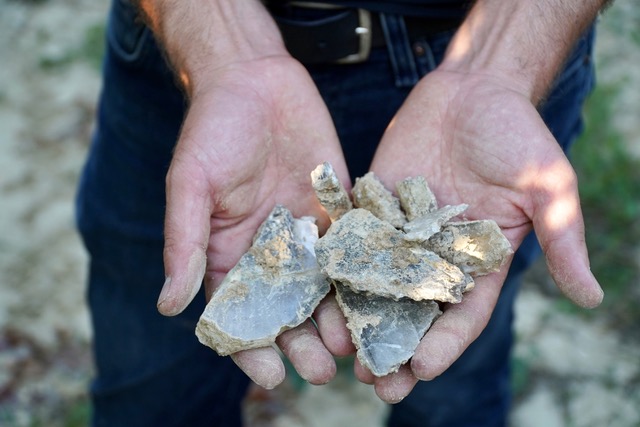
If the word Verduno rings a bell to some of you, then it’s probably because you link it to Barolo wines, especially the Monvigliero Cru, placed north-east of the little town and capable of giving flare and elegance to its assertive Nebbiolo grapes. Today, you will be happy to discover that this is just one side of the story. The other half is a unique one in the Barolo appellation: Verduno – and just Verduno – is in fact home to another native red grape, called Pelaverga Piccolo (ampelographically different from the Pelaverga Grosso, grown around Saluzzo, further west, towards the Alps).
It’s an adaptable and versatile variety with remarkable vigour that has been growing in Verduno since the 15th century, appreciating (and reacting differently to) its various kind of soils. Like a lot of native Italian grapes, we nearly lost it, but some farmers never gave up, blending it together with other red grapes during the wine making process. Between the World Wars only one winery continued vinifying the Pelaverga grapes separately: it was Comm. Burlotto, who collected its grapes and those of other farmers around town, producing just a tiny amount of wine a year – maybe 1,000 bottles; a tiny production, but never the less sufficient to keep the spark alive.
Later, in 1972, Castello di Verduno decided to plant some new vineyards of Pelaverga Piccolo, slowly followed by other wineries. From there on, a community awareness began to grow through the streets of Verduno that led to the constitution of an informal association in the 80s and finally to the Associazione Verduno è Uno in the year 2000, which started some research projects alongside different institutions (the Faculties of Agriculture and Arboreal Cultivation Institutes of the Universities of Turin and Milan, the Experimental Institute for Viticulture of Asti and the Luigi Veronelli Permanent Seminar) and the growing of experimental vineyards. In 1995 the Verduno Pelaverga DOC was created. There is here one important detail of Pelaverga Piccolo’s path in Verduno, that makes this story so precious, and it’s how different layers of society were able to work together to strengthen the knowledge and the appreciation around a “minor” grape.
So why is Verduno so particular? Let’s address the issue starting from the holy-viticulture-trinity: soil, climate and variety, beginning from the latter. Pelaverga is a semi-aromatic native red grape variety, medium-late in its maturation, vigorous, adaptable and versatile. It produces a bright coloured wine, light bodied, with smooth tannins, not too much acidity, but rich of flavours. An intriguing, graceful wine, that you can sip easily and that leaves your mouth with a pleasant fruity-spicy kick, without demanding too much attention. Pelaverga has a little secret: in its skin, between its aromatic molecules (terpenes), there is a special concentration (40 nano-grams per litre) of rotundones, which give the wine a typical “peppery” hint, more perceivable than in Cabernet Sauvignon (1 nano-gram per litre), for example. This taste of pepper can be highlighted by the winemaking process (using whole bunch fermentation, for example), can be lost by too high an amount of sun irradiation or heat, and can be underlined by the soil from which the grapes come from.
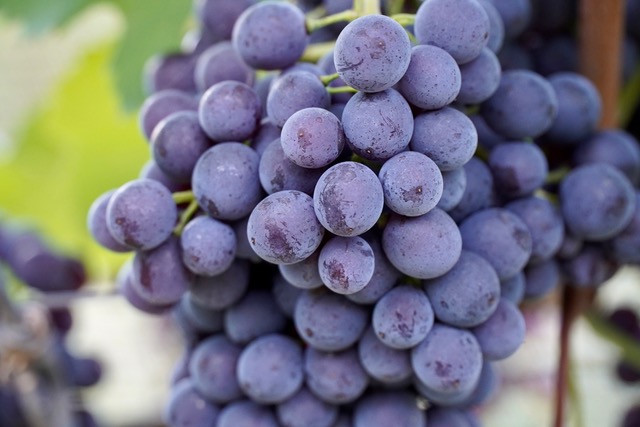
But climate plays its role as well. The Langhe area normally enjoys a temperate semi-continental climate, with temperatures being fairly cold in winter and high in summer, and with mild autumns lasting until the end of October. Precipitation is usually concentrated in spring and autumn, although climate changes are shuffling this rule. Verduno is on a hill nearly 400 metres high, and benefits thus from a constant breeze, blowing from two directions: west – north/west, coming from the Atlantic, and south, coming from the Mediterranean. Both winds lose their huge amount of humidity, having to rise upon the Alps and the Apennines, therefore both arrive warm and dry, blowing above the Langhe hills. Also the Tanaro river, that flows permanently and with a fair amount of water north of the town, has some influence on this climate, especially in Verduno: it creates a sort of breeze itself, that plays with the western and southern winds, giving the air a good and constant amount of humidity, mitigating excessive temperatures.
Now, let’s face the roots. The average depth of the ground planted with vines in the Verduno area is around 120 centimetres. Underneath there is the mother rock, formed during the Miocene, but linked to different moments during the evolution of a marine environment, which led to the formation of mainly two type of soils: a white one and a red one. Imagine the whole Pianura Padana covered with sea water: 8 million years ago (the Tortonian Age), the Mediterranean started receding, leaving marshy land. The fossil laminated St. Agatha marls began then to form in hundreds of years: rocks arranged in very thin layers made up of fine materials such as silt (60%) and clay (30%), mixed with a little amount of sand (about 10%) and rich in limestone (calcium carbonate) originating from direct precipitation from the sea water and the small fossil shells of marine microorganisms. This white soil concentrates the noble substances in the musts, while preserving an extraordinary elegant balance, and enhancing the peppery side of Pelaverga.
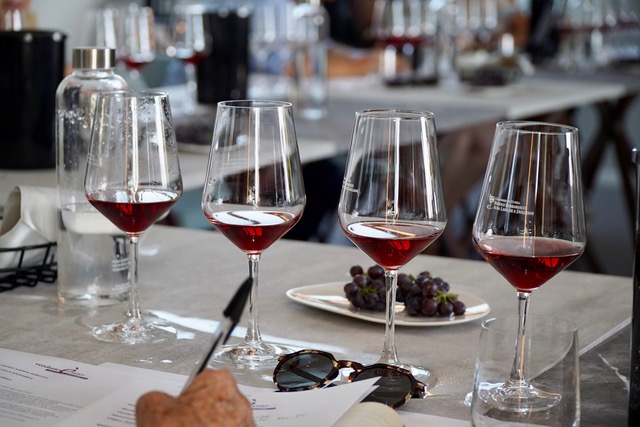
The Basadone 2022 of Castello di Verduno has it all on the palate, with its hint of liquorice, its acidic structure and the sweetness of sour cherry candy. White pepper is the dominant aroma in Verduno Pelaverga 2022 of Gian Luca Colombo with a bright, precise and balanced sip, aged in terracotta amphora. The Pelaverga Verduno 2022 of Casa Vinicola Scarpa has more spices and the fruit is more mature but with a tighter texture. Diego Morra’s Verduno Pelaverga 2022 is gentle, sweet, full of flower scents: you have to give the rotundone time to reveal itself on the after taste.
Partner Content
The Verduno Pelaverga 2022 of Cadia is a leaner version, full of red fruit flavours with a iodine hint, a citrus fruit acidity and a white pepper finish. The Comm. Burlotto style is unmistakable: complex and nevertheless whispered, with fruits, flowers, herbs, roots and green pepper, aged in old oak for a third of the wine. The Pelaverga Verduno 2022 of Reverdito undergoes a long extraction: profound and balsamic, it loses a bit of pepper along the way. Last but nor least, the Il Gusto della Solidarietà 2022 of Matteo Ascheri, just as dark, deep and balsamic, but with a strong accent on sour cherry flavour and black pepper.
The second soil formation in Verduno extends from the ridge on which the village itself stands, towards the west and down to the Tanaro river. It is a geological feature known as the Chalk Vein Formation, because it consists of marls alternating with banks of chalk crystals (calcium sulphate), created by the so-called salinity crisis, that radically disrupted the entire Mediterranean Basin about 6 million years ago (Messinian era): during this phase, the Mediterranean found itself isolated from the ocean and underwent an intense evaporation process, that led to a drop in the sea level of over 1,500 metres. Salt lagoons were formed and large banks of chalk crystals deposited between the marls. These soils that developed have a texture similar to St. Agatha marls, but enriched with a significant amount of chalk, which acts as a natural fertiliser. The result is a richness that is also superior in terms of its capacity to retain water, giving the vine a considerable vegetative boost, which translates into prolonged vigour even during the driest phases.
From this richer, red soil, come more metallic/haematic (bloody) wines, less peppery and with a broader texture. The Verduno Pelaverga 2022 di I Bré is just as sweet as a pomegranate juice and gently sapid, with a final light green pepper touch. Just as Sui Cristalli 2022 of Arnaldo Rivera, which has a dense and fleshy texture, rich in sweet red fruits. La Massara’s Verduno Pelaverga 2022 has haematic and mature flavours, and ends up with a fresh hint of white pepper, wild flowers and herbs. The last two are 2021 vintages: Poderi Roset seems high in volatile acidity with a pleasant bergamot and green pepper flavours; Daje Mach of La Bìoca, instead calls gun flint into mind, with citrus fruits, tamarind and a final spice note along its central grip.
In addition to this 13 wineries – enhancing the two main different type of soils in Verduno – there are four exceptions, due to a different winemaking style or a different geological origin.
Poderi Luigi Einaudi and Bel Colle have given to their Pelaverga, both 2022, a Nebbiolo interpretation, that gives them more elegance and softness, but takes away a good part of the pepper notes. The first one comes from red soils, ages partly in concrete, and tastes like cherry candy, herbs and nutmeg, precise in its persistent structure; the second has a great grip, with rhubarb and undergrowth flavours and a citrus finish. In terms of geological origins, we have the Speziale 2022 of Fratelli Alessandria, which comes from a mixture of red and white soils and has therefore more structure, less acidity, but a lot of aromatic complexity at the same time (white pepper included). Last but not least, the most notable exception: the Verduno Pelaverga 2022 of San Biagio, the only one that comes from La Morra, by historical concession. Here the soil is full of stones that generates tough wines. This Pelaverga comes from the Capalot cru and has less fragrance and spiciness, on the other side more minerality and structure.
These 17 wines we were able to taste in Pelaverga, during a masterclass led by wine writer Ian D’Agata, represent nearly all of the wineries that produce Verduno Pelaverga (just Sordo and Vinandolo were missing). 30 hectares are dedicated to it (25.18ha in the municipality of Verduno, 3.96ha in the municipality of Roddi d’Alba, 1.62ha in the municipality of La Morra), for a total amount of bottles that fluctuates between 150,000 and 180,000 a year (204,875 in 2022): really a niche market, confronted with the 66 millions of bottles that are produced within the Consorzio Barolo, Barbaresco, Alba, Langhe e Dogliani, which also protects the appellation of Verduno Pelaverga.
Nevertheless, these winemakers strongly believe in this little production: they stick together, work together, confront themselves, creating a lively and inventive community. Finding recognition in Italy and abroad, tickling the curiosity of wine lovers and wine experts, which, in return, helps them grow further. The event was organised by the 11 members of the Associazione Verduno è Uno, but every producer was invited, all the restaurants and hotels of the town were involved, as much as the little group of active artists (painters, photographers, musicians, actors, sculptor and poets, some of whom were born overseas), that permanently live in Verduno.
“It’s not that Verduno has something particular that inspires our creativity. But people here never said ‘no’ to what came out of our imagination. And this makes this place precious,” said one of them. That same attitude of welcoming and embracing who and what is different is what saved Pelaverga Piccolo in the kingdom of Nebbiolo.
Related reading:
Why there’s optimism following difficult harvest in Italy
Terenzuola Fosso di Corsano: ‘a delicious outcast’
Related news
Grappa consorzio names new president

